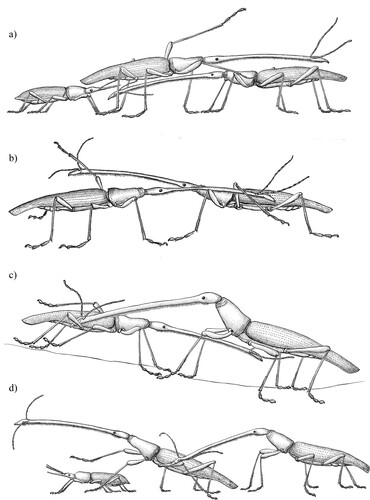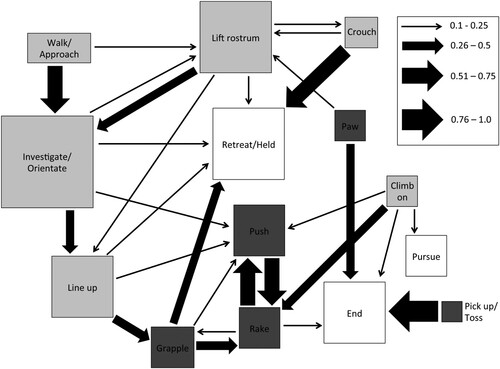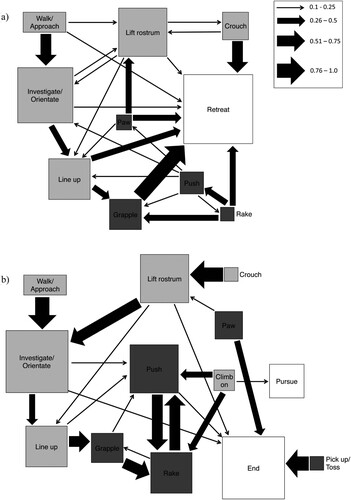Figures & data
Table 1. Ethogram of agonistic behaviours employed during male-male interactions.
Figure 1. Examples of some competitive behaviours used by male giraffe weevils during contests. A, Paw: A male (centre) guarding a female (left) has both front legs raised and moving in a vigorous pawing action, contacting with the intruder male (right); B, Grapple: Two males line up with their rostrums held along the length of the other’s body and hooked under the middle leg; C, Rake: A male (right) uses his rostrum in a pulling action both downward and towards himself against a competitor male (left); D, Bite: A male (right) bites the middle leg of a male (centre) who is guarding a female (left).

Figure 2. Kinematic diagram describing a first order Markov chain analysis of competitive interactions for winner and loser giraffe weevil males (N = 63 individuals, 100 contests) for all transitions that occurred 10% or more of the time. Arrow thickness relates to transition frequency between behaviours (see legend). Box size is proportional to the frequency that each behaviour occurred. Light grey boxes represent low intensity behaviours, dark grey boxes, high intensity behaviours, and white boxes, conflict resolution behaviours.

Figure 3. Kinematic diagrams describing a first order Markov chain analysis of interactions between male giraffe weevils shown for contest A, losers and B, winners for all transitions between behaviours that occurred 10% or more of the time. Arrow thickness relates to transition frequency between behaviours (see legend). Box size is proportional to the frequency with which each behaviour occurred. Light grey boxes represent low intensity behaviours, dark grey boxes, high intensity behaviours, and white boxes, conflict resolution behaviours.

Table 2. Comparison of competitive behaviours used by contest winners and losers.
Table 3. GLMs comparing investment in competitive behaviours between winners and losers, and overall number of behaviours executed.
Data availability
Data associated with this study is deposited at 10.6084/m9.figshare.22207954
